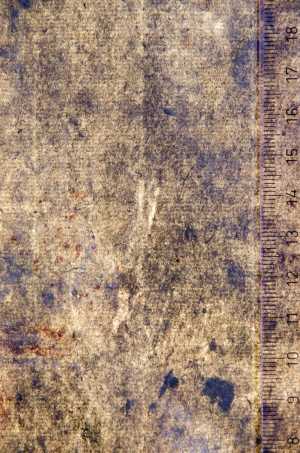Specifications
| Title | Altar Boy with a Candle |
|---|---|
| Material and technique | Black and coloured chalk, heightened with white, on discoloured blue paper |
| Object type |
Drawing
> Two-dimensional object
> Art object
|
| Location | This object is in storage |
| Dimensions |
Height 269 mm Width 148 mm |
|---|---|
| Artists |
Attributed to:
Jacopo Bassano (Jacopo da Ponte)
|
| Accession number | I 56 (PK) |
| Credits | Loan Stichting Museum Boijmans Van Beuningen (former Koenigs collection), 1940 |
| Department | Drawings & Prints |
| Acquisition date | 1940 |
| Creation date | in circa 1575-1590 |
| Watermark | ?Lamb/beast in a circle with something above (47 x 39 mm, on P3 of 6P, vH) |
| Inscriptions | ‘B.B.no: 3 [..]’ (verso, centre right, pen and ink), ‘23’ (verso, lower left, pencil) |
| Collector | Collector / Franz Koenigs |
| Mark | Z. Sagredo (L.2103a) inv. B.B. no: 3[..], M. Marignane (L.1848), F.W. Koenigs (L.1023a) |
| Provenance | Nicolò Sagredo (1606-1676); Zaccaria Sagredo (1653-1729, L.2103a, inv. 'B.B. no: 3[..]' in dorso), Venice; - ; Anon., Lyon, until 1915-20; Marie Marignane Patissou (c. 1880-1925, L.1848), Paris; Franz W. Koenigs (1881-1941, L.1023a), Haarlem, acquired in 1926 (Jacopo Bassano); D.G. van Beuningen (1877-1955), Rotterdam, acquired with the Koenigs Collection in 1940 and donated to Stichting Museum Boijmans Van Beuningen |
| Exhibitions | Amsterdam 1934, no. 485; Paris 1935, no. 512; Rotterdam 1938-39, no. 38; Amsterdam 1953, nr. T.3; Paris/Rotterdam/Haarlem 1962, no. 116, pl. 86; Rotterdam 2009 (coll 2 kw 4) |
| Internal exhibitions |
De Collectie Twee - wissel IV, Prenten & Tekeningen (2009) |
| Research |
Show research Italian Drawings 1400-1600 |
| Literature | Amsterdam 1934, no. 485; Paris 1935, no. 512; Rotterdam 1938-39, no. 38; Tietze/Tietze-Conrat 1944, no. 152, pl. 142,2 (J. Bassano); Amsterdam 1953, no. T.3; Arslan 1960, vol.1, p. 368 (J. of F. Bassano); Paris/Rotterdam/Haarlem 1962, no. 116, pl. 86; Gibbons 1977, p. 15 (after J. Bassano); Fischer 2018, pp. 56-57 n. 6. |
| Material | |
| Object | |
| Technique |
Highlight
> Painting technique
> Technique
> Material and technique
|
| Geographical origin | Italy > Southern Europe > Europe |
| Place of manufacture | Venice > Veneto region > Italy > Southern Europe > Europe |
Do you have corrections or additional information about this work? Please, send us a message
























